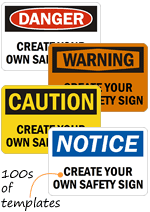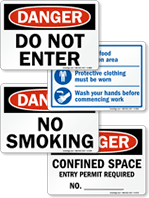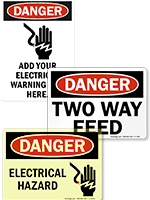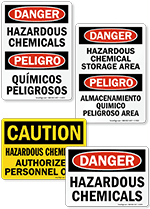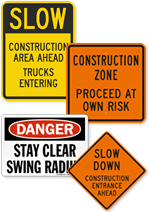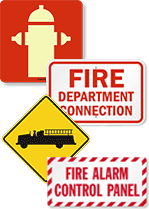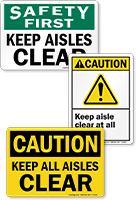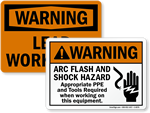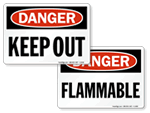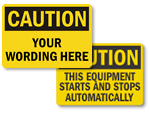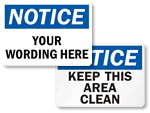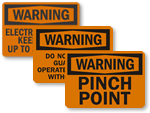A.
Usually constructed from rigid materials like aluminum, warning signs can easily be mounted to walls, doors, posts, and fences. These can range from 3.5”x5” to 24”x30” or even greater in size and can carry comprehensive safety messages. Warning signs are installed at a safe viewing distance from the hazard and often require installation by drilling screws on pre-punched holes.
Generally smaller in size, labels are usually made of paper, polyester, or vinyl and are flexible. Unlike signs, these are usually applied closer to the hazard on points of contact, on surfaces, etc. Warning labels stick to the surface and do not require any drilling.
Warning labels are more economical than warning signs. While the former is perfect when you need your safety message to go where the hazard does, such as warning labels on containers carrying dangerous materials, the latter is required to identify workplace hazards such as machinery, forklift areas, electrical units, and so on.

